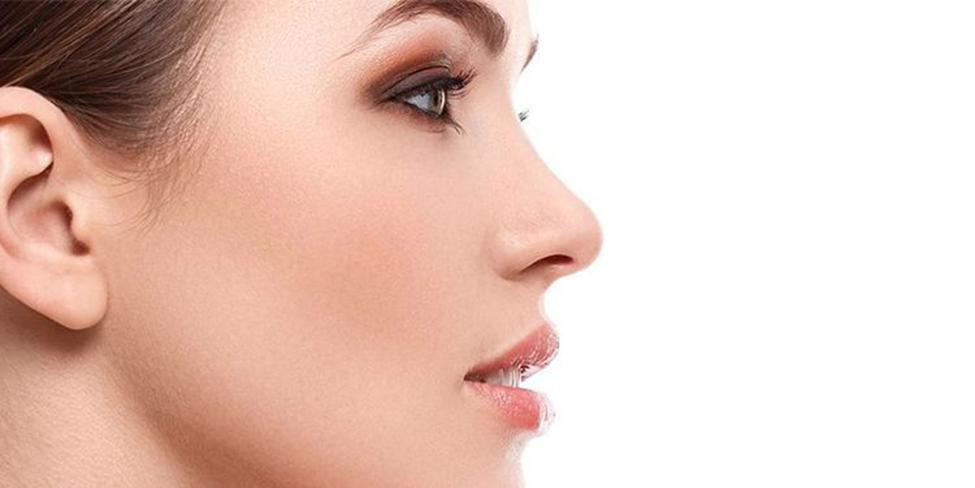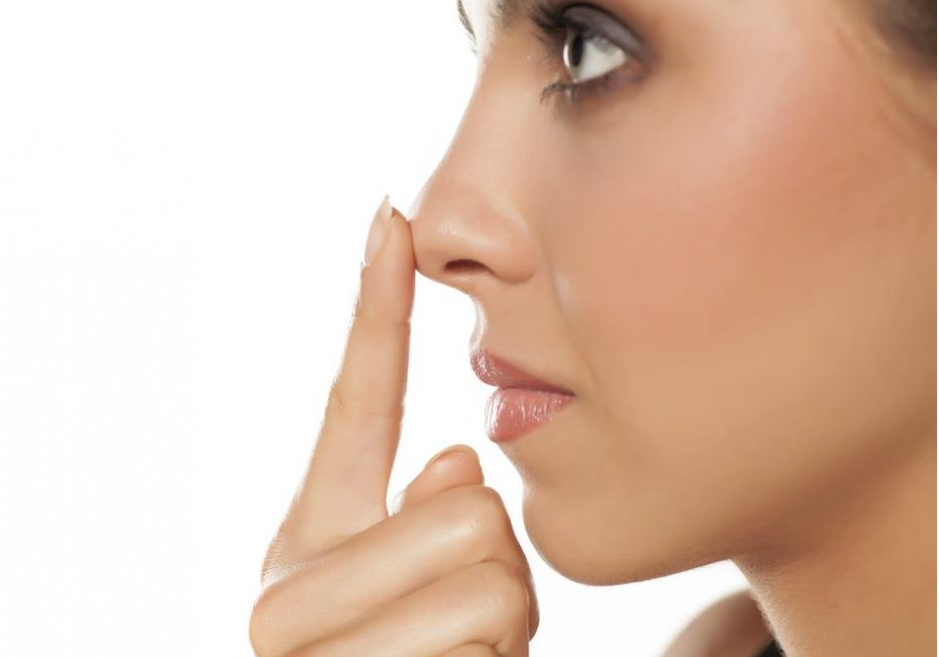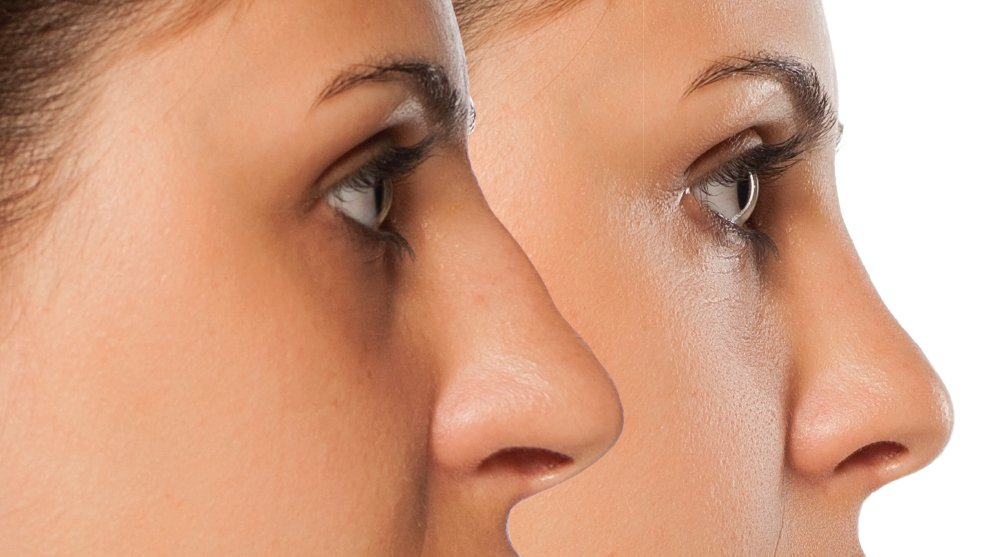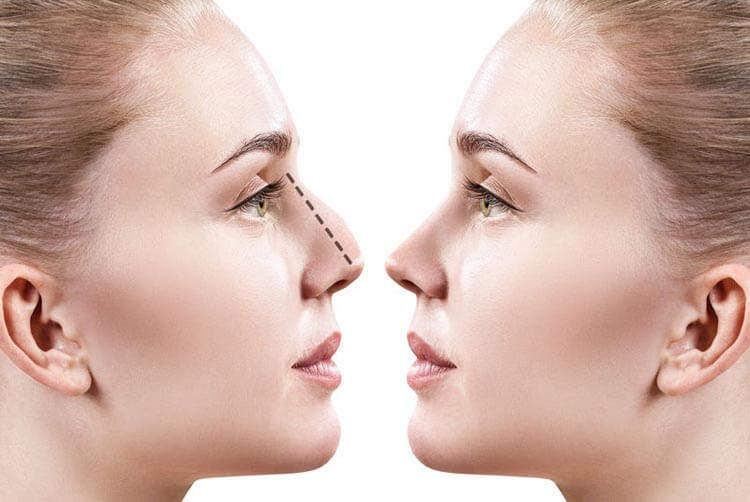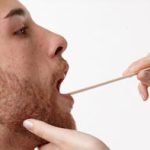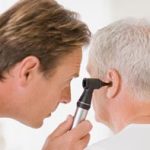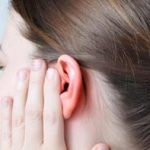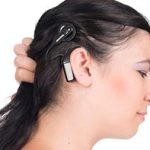NOSE JOB
Rhinoplasty (RIE-no-plas-tee) is surgery that changes the shape of the nose. The reason for rhinoplasty may be to change the appearance of the nose, improve breathing or both.
The upper part of the structure of the nose is bone. The lower part is cartilage. Rhinoplasty can change bone, cartilage, skin or all three. Talk with your surgeon about whether rhinoplasty is appropriate for you and what it can achieve.
Your other facial features, the skin on your nose and what you would like to change are considered when planning the procedure. If you’re a candidate for rhinoplasty, the surgeon will develop a personal plan for you.
Sometimes part or all of a rhinoplasty is covered by insurance.
Why it’s done
Rhinoplasty can change the size, shape or proportions of the nose. It may be done to fix issues from an injury, correct a birth defect or improve some breathing problems.
Risks
As with any major surgery, rhinoplasty carries risks such as:
- Bleeding.
- Infection.
- A bad reaction to the anesthesia.
Other possible risks specific to rhinoplasty include but are not limited to:
- Problems breathing through the nose.
- Permanent numbness in and around the nose.
- The possibility of an uneven-looking nose.
- Pain, discoloration or swelling that may last.
- Scarring.
- A hole in the wall between the left and right nostrils. This condition is called septal perforation.
- A need for additional surgery.
- Change in the sense of smell.
Talk to your health care provider about how these risks apply to you.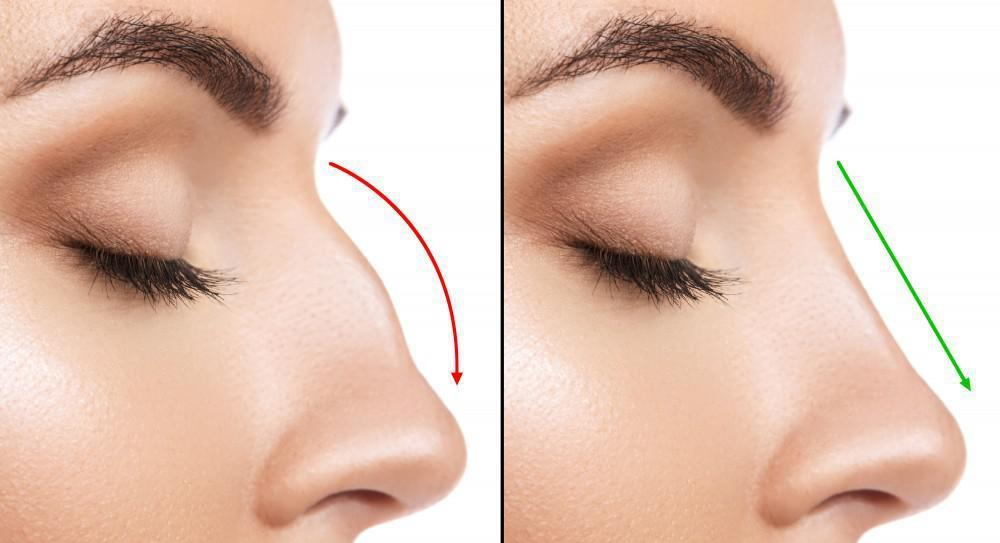
How you prepare
Before scheduling rhinoplasty, you meet with a surgeon. You talk about things that determine whether the surgery will work well for you. This meeting usually includes:
- Your medical history. The most important question is about why you want the surgery and your goals. You also answer questions about your medical history. This includes a history of nasal blockages, surgeries and any medicines you take. If you have a bleeding disorder, such as hemophilia, you may not be a candidate for rhinoplasty.
- A physical exam. Your health care provider does a physical examination. Your facial features and the inside and outside of your nose are looked at.
The physical exam helps determine what changes need to be made. It also shows how your physical features, such as the thickness of your skin or the strength of the cartilage at the end of your nose, may affect your results. The physical exam is also important for determining how rhinoplasty will affect your breathing.
- Photographs. Photographs of your nose are taken from different angles. The surgeon may use computer software to change the photos to show you what kinds of results are possible. These photos are used for before-and-after views and reference during surgery. Most importantly, the photos let you have a specific discussion about the goals of surgery.
- A discussion of your expectations. Talk about your reasons for surgery and what you expect. The surgeon can review with you what rhinoplasty can and can’t do for you and what your results might be. It’s normal to feel self-conscious talking about your appearance. But it’s important that you’re open with the surgeon about your desires and goals for surgery.
Looking at the overall proportions of the face and profile is important before having rhinoplasty. If you have a small chin, the surgeon may speak with you about surgery to build up your chin. This is because a small chin can create the illusion of a larger nose. It’s not required to have chin surgery, but it may better balance your facial profile.
Once the surgery is scheduled, find someone to drive you home after the procedure if you’re having an outpatient surgery.
For the first few days after anesthesia, you may forget things, have a slower reaction time and impaired judgment. Find a family member or friend to stay with you a night or two to help with personal care as you recover from surgery.
Food and medications
Don’t take medicines that have aspirin or ibuprofen (Advil, Motrin IB, others) for two weeks before and two weeks after surgery. These medicines may make you bleed more. Take only the medicines approved or prescribed by your surgeon. Avoid herbal remedies and over-the-counter supplements.
If you smoke or vape, stop. Smoking and vaping can slow healing after surgery and can result in tissue death. You could also get an infection.
What you can expect
Each rhinoplasty is customized for the person’s specific anatomy and goals.
During the procedure
You’re given medicine to put you into a sleep-like state for the surgery. This is called anesthesia. The kind of anesthesia you get depends on how complex your surgery is and what the surgeon prefers. Ask your surgeon which type of medicine is most appropriate for you.
- Local anesthesia with sedation. This type of anesthesia is usually used in an outpatient setting. It’s limited to a specific area of your body. A pain-numbing medication is injected into the nasal tissues, then you are given medicine through an intravenous (IV) line, which is a small tube placed in a vein in the hand, neck or chest. This medicine makes you groggy but not fully asleep.
- General anesthesia. You receive medicine, called anesthetic, by breathing it in or through an IV line. General anesthesia affects your entire body and causes you to be asleep during surgery. General anesthesia requires a breathing tube.
Rhinoplasty may be done inside the nose or through a small external cut, known as an incision, at the base of the nose, between the nostrils. The surgeon will likely readjust the bone and cartilage underneath the skin.
The shape of the bones or cartilage in your nose can be changed in several ways. It depends on how much needs to be taken out or added, the nose’s structure and available materials. For small changes, cartilage may be taken from deeper inside the nose or from the ear.
For larger changes, cartilage from a rib, implants or bone from other parts of the body can be used. After these changes are made, the skin on the nose and tissue are put back, and the cuts are sewn together.
Sometimes, the wall between the two sides of the nose, known as the septum, is bent or crooked. This is called a deviated septum. It can be straightened during surgery to make breathing easier.
After the surgery, you’re in a recovery room. You’re watched while you wake up. You might leave later that day or, if you have other health issues, you might stay overnight.
After the procedure
After the surgery, you need to rest in bed with your head raised higher than your chest. This reduces bleeding and swelling. Your nose may be stuffed up because of swelling. It could also be from the splints put inside your nose during surgery.
Most of the time, the internal bandages stay in place for 1 to 7 days after surgery. A splint may be taped to your nose for protection and support. It’s usually in place for about one week.
You may have a little bleeding and drainage of mucus and old blood for a few days after the surgery or after removing the dressing. A drip pad — a small piece of gauze held in place with tape — may be put under your nose to absorb drainage. Change the gauze as directed by your health care provider. Don’t put the drip pad tight against your nose.
You may be given other instructions to further lower the chances of bleeding and swelling. These should be followed for several weeks after surgery:
- Avoid intense physical activities such as aerobics and jogging.
- Take baths instead of showers while you have bandages on your nose.
- Don’t blow your nose.
- Sneeze and cough with your mouth open.
- Avoid certain facial expressions, such as smiling or laughing.
- Eat high-fiber foods, such as fruits and vegetables, to keep from getting constipated. Constipation can cause you to push hard, putting pressure on the surgery site.
- Brush your teeth gently to keep your upper lip from moving.
- Wear clothes that fasten in the front. Don’t pull clothing, such as shirts or sweaters, over your head.
In addition, don’t rest eyeglasses or sunglasses on your nose for at least four weeks after the surgery. They can put pressure on your nose. You can use cheek rests or tape the glasses to your forehead until your nose has healed.
Use SPF 30 sunscreen when you’re outside, especially on your nose. Too much sun may cause permanent discoloration on the skin of the nose.
You may have some short-term swelling or black-and-blue coloration of your eyelids 2 to 3 weeks after the surgery. Swelling of the nose can last longer, sometimes up to a year. Eating less sodium will help the swelling go away faster. Don’t put anything such as ice or cold packs on your nose after surgery.
Your nose changes throughout your life whether you have surgery or not. For this reason, it’s hard to say when you have reached your final result from the surgery. However, most of the swelling is gone within a year.
Why choose SinoheMedTour?
SinoheMedTour does all the arrangements for you, from helping you choose the best rhinoplasty surgeon in Iran, get a visa for Iran, book flight and accommodations, to picking you up from airport, transferring you to your hotel and hospital, assigning a personal interpreter to you to help you communicate with your doctor, and providing post-operative care and consultation.
How much does nose job in Iran cost?
Depending on the doctor, hospital and clinic’s fees, and other factors, an average primary nose job in Iran would cost something between $1500 and $3500. (Please note that this is simply a price range for rhinoplasty in Iran. Our prices are usually somewhere near or above the average of this range given our quality of services and the expertise of our surgeons.)
A revision rhinoplasty is normally more expensive than a primary procedure. The infographic you see here compares the average cost of rhinoplasty in Iran with that in other countries.
Rhinoplasty Surgeons in Iran
Iranian nose surgeons are among the most knowledgeable, experienced, and prolific in the world. Having graduated from top universities in Iran and the US, and completed advanced courses and fellowships in specialized fields such as rhinology and maxillofacial surgery mostly in the United States and European countries, the best nose surgeons in Iran are in fact the best in the world.
The tried-and-tested expertise of Iranian rhinoplasty surgeons is the outcome of their many years of hard work and experience. An average nose surgeon in Tehran, for example, performs 100 surgeries a month. Some of the most popular rhinoplasty surgeons in Iran do as many as 5 operations in a single day.
It is noteworthy that Iranian rhinoplasty doctors deal with various cases with very diverse noses. This makes for their even greater proficiency in operating on noses with different shapes and deformities.
Some of them, however, are best known for a specific type of nose, e.g. fleshy noses or bony noses, or specific types of nose jobs, e.g. fantasy nose surgery. They also have cases with different ages; people as young as 17 to as old as 50 plus, the latter usually involving medical rhinoplasty cases.
One big advantage of Iranian rhinoplasty surgeons is that they put great importance on the pre-op doctor-patient conversation. They devote a lot of time listening to patients in a friendly atmosphere to clearly understand what they want.
Of course, most rhinoplasty surgeons possess a good understanding of aesthetics, which means they give consultation to patients as to the best way the nose could be reshaped so that to meet the aesthetic standards and be in harmony with other facial features.
In short, as rhinoplasty is an amalgam of science and art, Iranian rhinoplasty surgeons make use of their extensive knowledge, experience, and strong aesthetic sense to make your dream come true.
SinoheMedTour’s rhinoplasty doctors will perform for you a nose job in the style of your choice, but they will also give you hints about the best nose style that fits your face so to meet the aesthetic standards and be in harmony with other facial features.
Types of Noses in Terms of Rhinoplasty
There are two main types of noses as far as rhinoplasty is concerned: bony nose and fleshy nose (meaty nose). The defining factor in differentiating between bony noses and fleshy noses is the thickness of the skin. Bony noses have thin skin or medium-thickness skin, but meaty noses have thick skin.
Because of the thinness of the skin in bony noses, the details of their structures are clearly recognizable. These noses generally have stronger cartilage, which leads to the nasal tip to be firmer with less likelihood of droopiness.
On the other hand, fleshy noses do not reveal the details of their bony structure and cartilage because of their thick skin. Furthermore, these noses have weaker and thinner cartilage tissues.
Sometimes, however, the above general rule does not apply, i.e. a bony nose might have think skin and a fleshy nose might have a thin skin with strong cartilages.
Nose Job for Men
Rhinoplasty or nose job is not only for women. An increasing number of men undergo rhinoplasty every year to change the properties of their noses and achieve a better-looking appearance. Even though this cosmetic surgery is becoming more popular to both genders and increasing number of male celebrities are undergoing nose job, but male-rhinoplasty is not exactly the same as female rhinoplasty.
Although plastic surgeons use the same surgical techniques while performing the surgery, the results of male rhinoplasty surgeries are different from the results of women nose jobs due to differences in anatomy and preferences.
Men’s noses are different from women’s. They tend to have straighter and wider bridge, have thicker skin, and their tips is often more bulbous and broader than women’s noses. Since the tips of men’s noses are less elevated, they tend to create an angle of 90 to 95 between the nose and the upper lip.
While women prefer to get a small and fantasy (upward) nose, most men would like to have a natural nose that characterizes by a more prominent nasal structure with a straight angle nose. This way the patient will be more satisfied about his nose while feeling at the same time that he has a more masculine nose.

